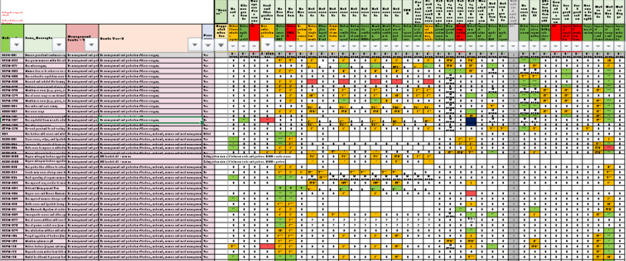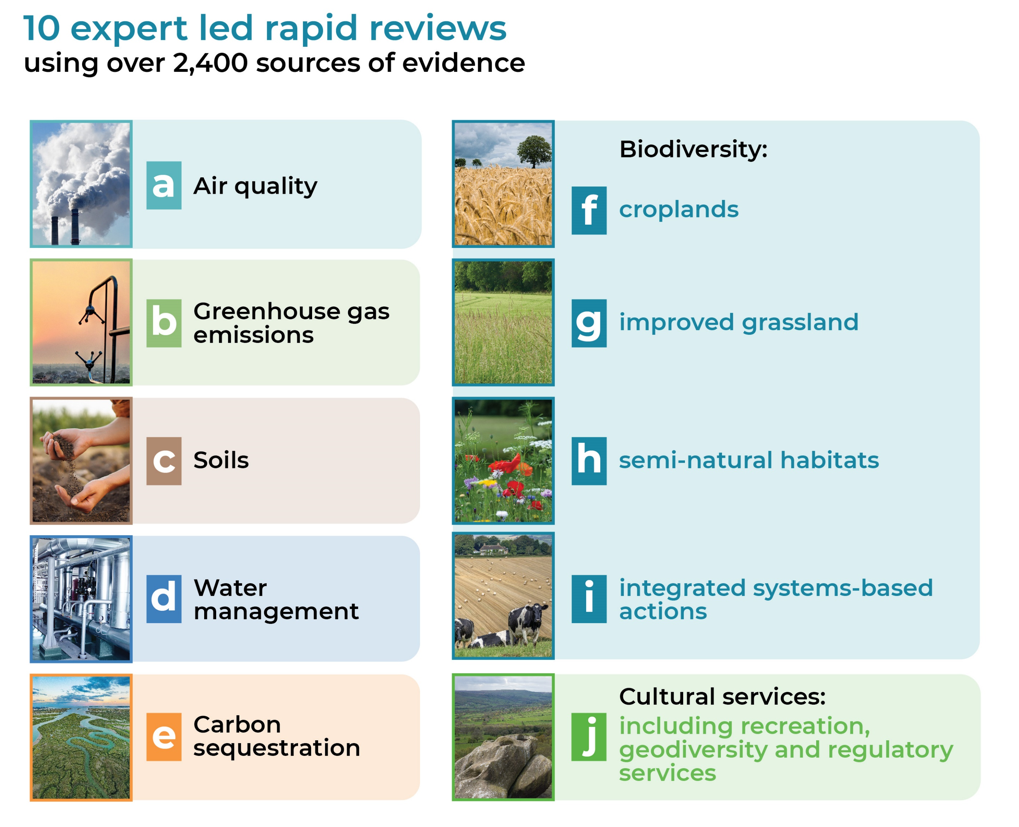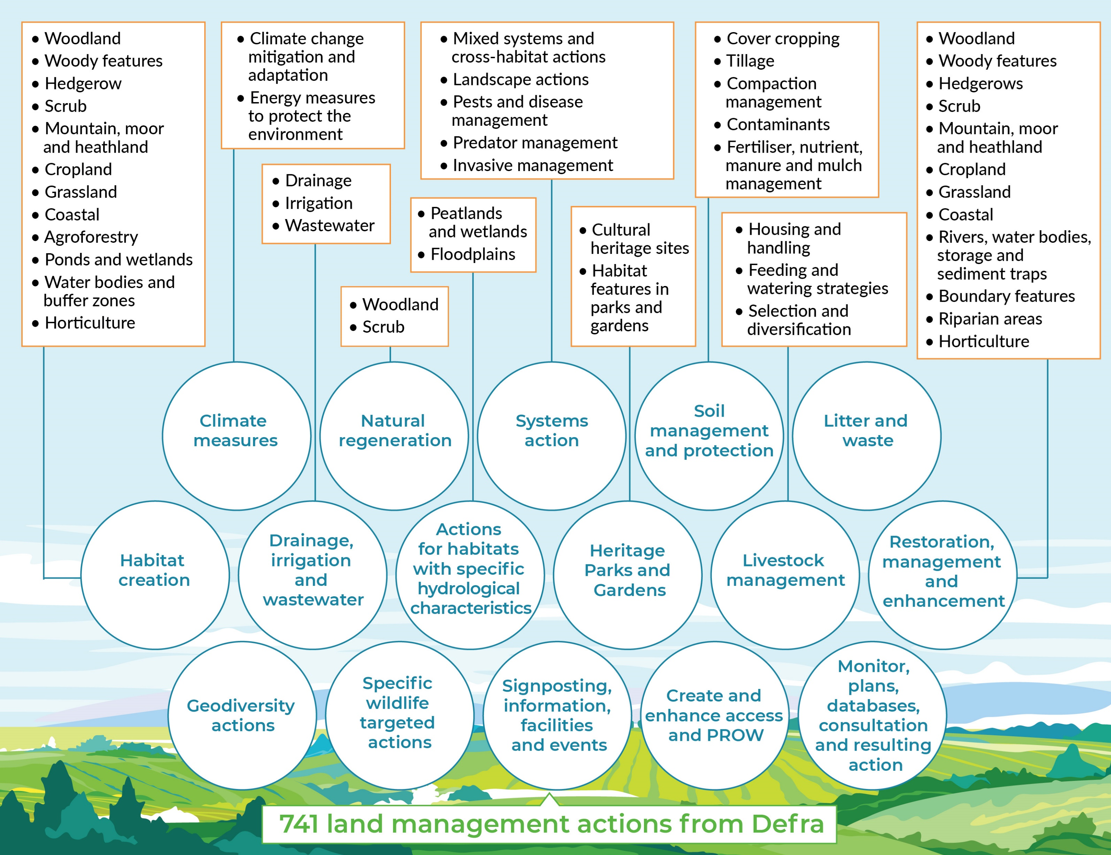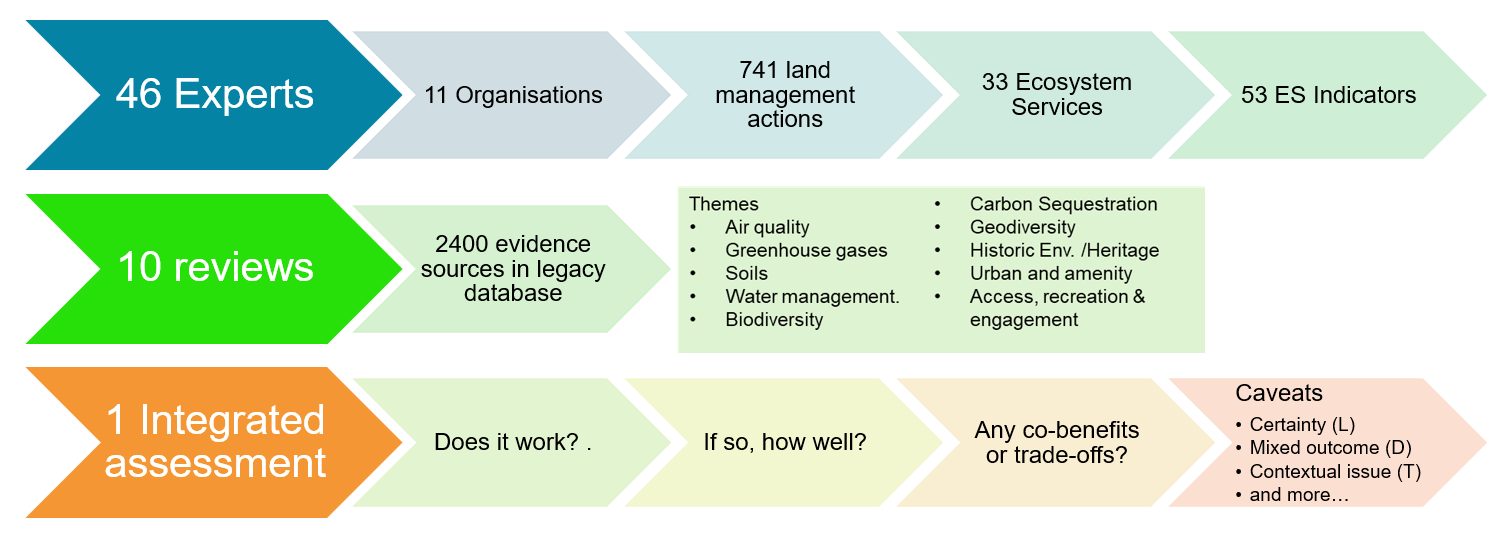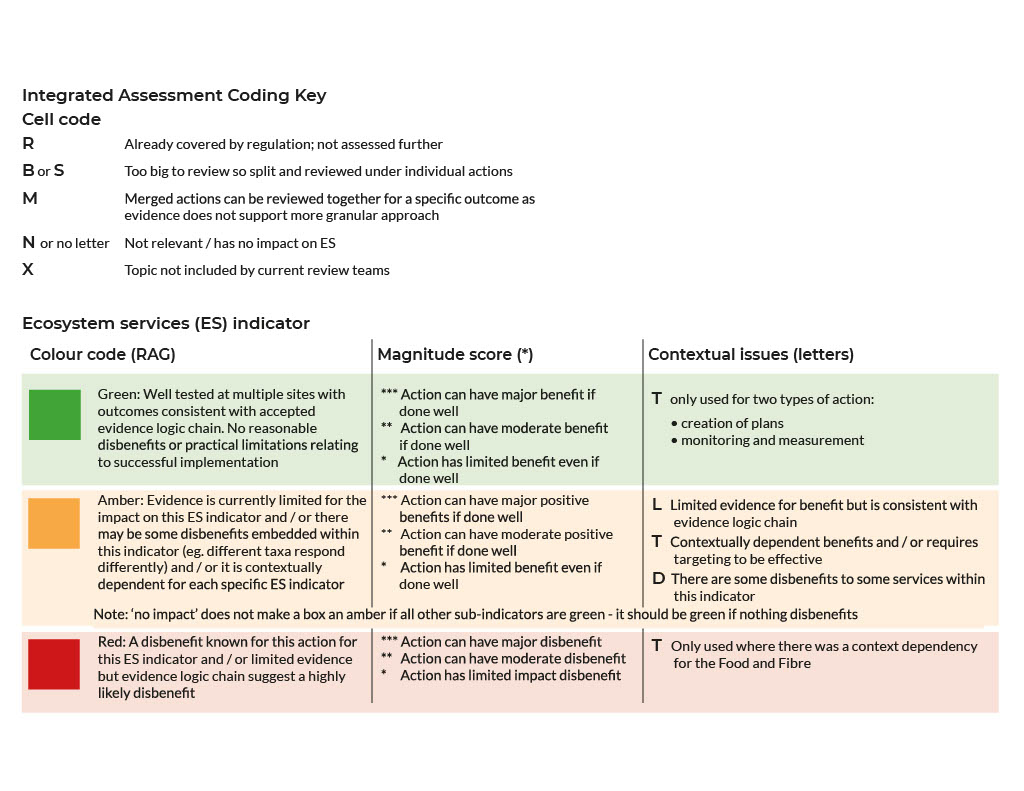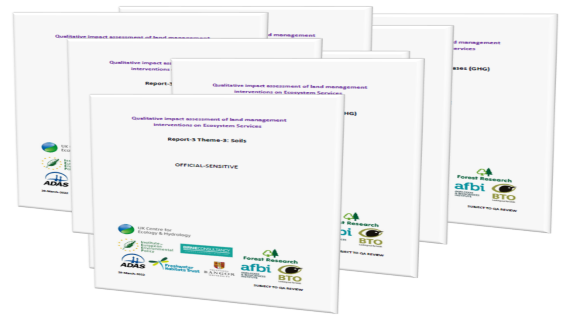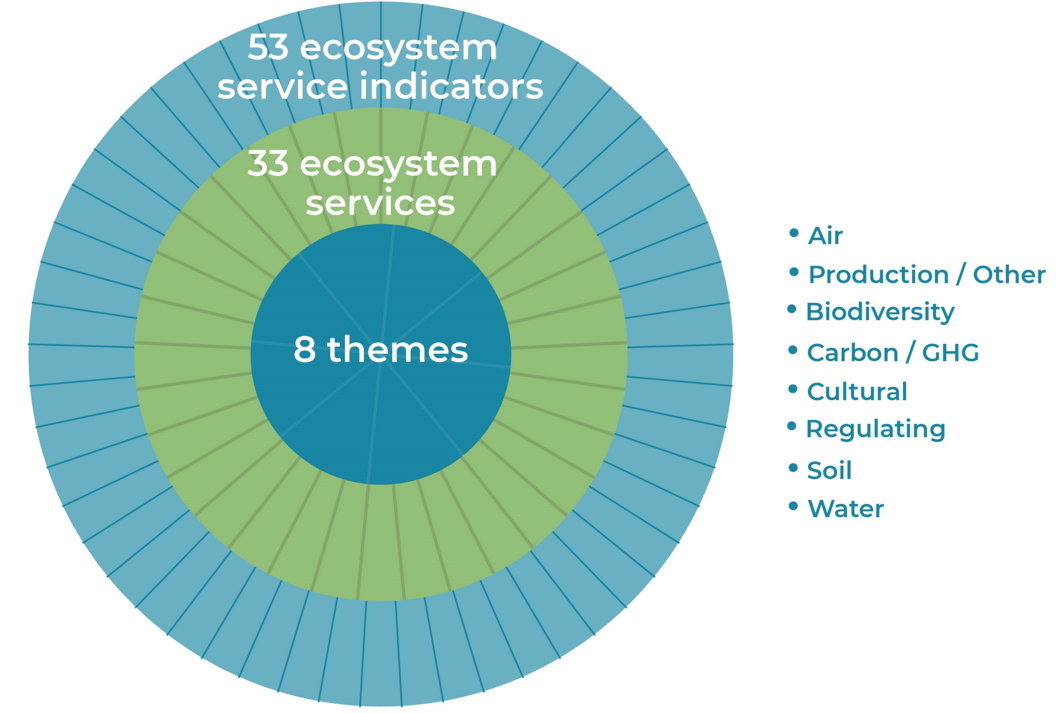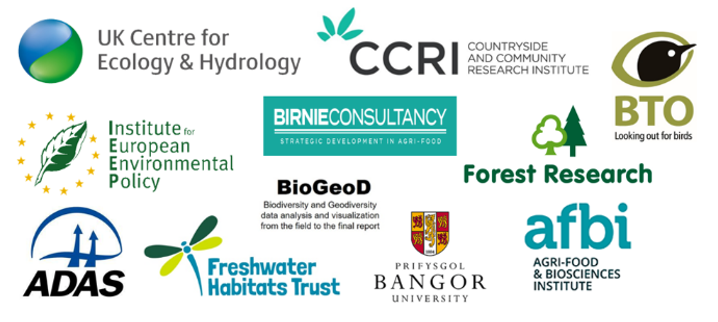Over 45 experts from nine research organisations have reviewed and rated the effects of different land management actions in a series of reports published by the UK Government’s Department for Environment, Food and Rural Affairs (Defra).
... to provide an expert-led, rapid, qualitative assessment of the likely impact of land management interventions potentially proposed for inclusion in Environmental Land Management (ELM) schemes, on selected Ecosystem Services (ES) ..."
The evidence is being used to inform new environmental land management (ELM) schemes in England, which fund farmers and land managers to deliver climate and environmental benefits alongside food production, replacing the payments made under the Common Agricultural Policy (CAP).
The three ELM schemes are the Sustainable Farming Incentive, Countryside Stewardship and Landscape Recovery. All three are voluntary, and farmers can choose actions that suit their specific setting. The reports are an important element of the broad evidence base Defra have built to support the development and roll out of these schemes ensuring they take an evidence-based approach.

